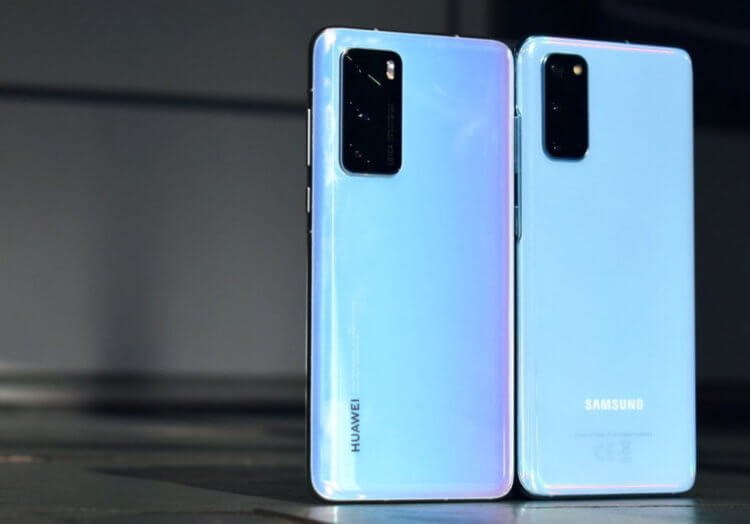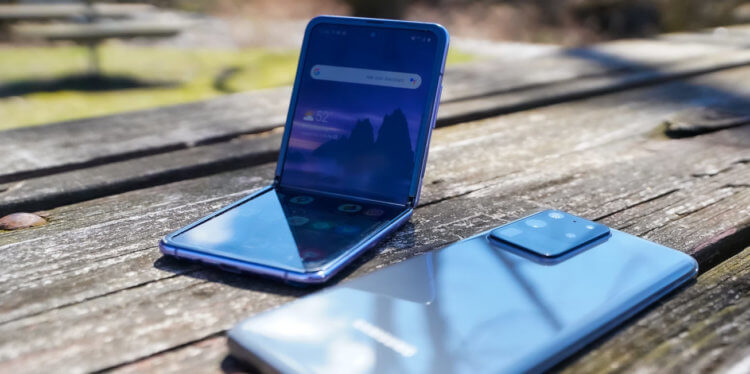Three phones were mainly discussed during this week: OnePlus 8, Samsung Galaxy S20 and… iPhone SE 2. Why? Taking a look at the phone from Apple, many realized that flagships were no longer 'innovation drivers'. When was the last time you saw a flagship phone with a new component or killer feature that wasn't just a more powerful version of an existing device? Phone makers seem to have declared a cold war to each other, but they don't want to risk it: every year they just 'pump' the characteristics of their past phones. Add megapixels to cameras, more RAM, built-in memory. Is that all?

All of these phones cost around $ 1,000. But are they worth it?
Over the years, these annual updates have brought tangible benefits. You could feel and see the difference between a phone from 2014 and a smartphone from 2015, they were really very different. All these transitions to fingerprint scanners, and then to face recognition, a waterfall screen and other modern chips. But every year the gap between the flagships is narrowing. We've reached a point where most people just don't see the difference between this year's flagship and last year's flagship.
See for yourself – the latest phones are packed with features that many will NEVER use. Huge reserves of RAM that are never close to zero, camera features that only professional photographers will struggle to take full advantage of, and a processor that was once used for desktops. But chips are getting more expensive, and as a result, all this has led to an increase in prices for phones for buyers.
What is the difference between Samsung and Huawei?
Many manufacturers are now working according to the good old scheme: one holds the flagship of a famous company, the other draws a pencil, then they release their phone under their own brand. It was as if at some secret meeting all phone manufacturers gathered and approved a list of functions that the flagship should have. And then they agreed to release phones with similar designs and internals. Despite all the talk of great rivalry between brands, the differences between Samsung's flagship devices Huawei or OnePlus are surprisingly small.

Find 10 differences, as they say
There is still innovation in the smartphone market, but now you have to look outside of flagships to find them. Nowadays, new technologies are more often found in mid-range phones or niche devices. Sometimes engineers take innovative features from other devices, such as the high refresh rates that first appeared in niche gaming phones. What do we see now? Almost all flagship manufacturers use this frequency.
You say: what about Samsung, because it has released so many interesting phones? Yes, Samsung has the Edge, the Note line, and now the Fold and Flip. But these are separate phones that seem to be on the sidelines of the flagship line. A kind of experimental apparatus. If they prove popular, the phones are tested and tweaked again, and then the parts that actually work end up in the flagship phone.

Experimental phones are good, but cost too much
New iPhone SE 2020
The only manufacturer that can afford to make phones with the same design for years is Apple. But this is only because she has a huge army of fans who understand that Apple is doing everything right. Take the same iPhone SE 2 – in fact, the company took the body from iPhone 8 and made a semi-flagship out of it. Which looks set to be one of the best-selling phones this year. But even Apple in our Telegram chat is slowly putting a spoke in the wheels: the new iPad Pro 2020 with LiDAR is not considered so innovative, especially since the processor there is almost the same as in iPad Pro 2018. There are also questions for Apple, but so far she is not so touched. She last experimented with new technologies when she introduced iPhone X – that was 3 years ago.
Remember manufacturers like HTC or LG or Motorola? They have all been committed to innovation over the years, and they weren't afraid to incorporate this technology into their phones. And where are they now? So I don’t know. But I know where Samsung is, Apple or Huawei – they are doing well with sales. The problem is that innovation doesn't always equate to high sales. So maybe we don't need them at all?
There are no manufacturers left on the phone market now who 'risk' their flagships for new technologies. Flagship phones in 2020 will undoubtedly be beautiful and powerful, but in most cases they will be 2019 phones with a new wrapper of 5G and a high-frequency screen. If you want innovation, take a look at niche devices like gaming phones or concept smartphones. And then go and buy yourself a new Galaxy or iPhone (well, everyone has different tastes), because usability is more important in the end.
